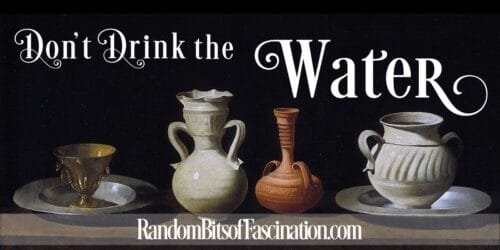Don’t Drink the Water: Lemonade


We’re deep in the throes of summer here and who doesn’t love a good lemonade?
Well, we’re not the only ones. The folks of Regency England enjoyed both lemonade and orangeade, too. Here are a couple of period recipes to get a feel for how they might have done it.
Proportion for a gallon: weigh a pound of sugar in lumps, wash eight good lemons, rub the rinds of two slightly upon the sugar, or one Seville orange instead of a lemon, according as it is desired; squeeze the eight lemons, put a few bits of cut rind squeezed to steep in it some time, and then sift it in a lawn sieve; less sugar at first is rather better, as more can be added by proportioning the sweetness to a good taste: it may also be done with less lemons; but then it is apt to taste very watery.
~ Clermont, 1776
No. 108. Lemonade.
RASP two lemons and squeeze six, put to them three gills of syrup and the rest water ; taste it, and i fit is not to your palate, alter and mend it till it is right; then strain it through a lawn sieve, and put it in your glasses for use.
No. 109. Orangeade.
TAKE eight China oranges and rasp four of them ;squeeze the eight and three lemons to the rind; put about two gills of syrup into it and the rest water; taste it, and if you find it not rich enough put some syrup to it, and squeeze more oranges in according to your palate ; and if not sour enough, squeeze in one more lemon ; strain it through a lawn sieve, and it is fit for use.
Nutt, 1807
In case you’re wondering, capillaire is a honey based syrup made from maidenhair leaves (which was also used as a cough remedy).
~Radcliffe, 1832
Though many of us just buy the premade varieties today, the recipes sound pretty familiar for the most part. The more things change, the more they stay the same.
References
Clermont, B., and Menon. The Professed Cook ; Or, the Modern Art of Cookery, Pastry, and Confectionary, Made Plain and Easy … including a Translation of Les Soupers De La Cour … By B. Clermont … The Third Edition, Revised and Much Enlarged. London: W. Davis, Etc., 1776.
Nutt, Frederick. The Complete Confectioner ; Or, the Whole Art of Confectionary: … By a Person, Late an Apprentice to the Well-known Messrs. Negri and Witten ..London: Printed for the Author, 1807.
Radcliffe, M. A Modern System of Domestic Cookery. Manchester: J Gleave, 1823.
To see Period Cookbook References, click here
To read more Georgian Era Recipes, click here.
To find more Beverage Recipes, click here.
To read more about Regency era Food and Drink, click here

I can understand oranges and lemons traveling from Seville, Spain on time. However, how on earth did they get China oranges to England? I can only assume they had transported the plants and had grown them in a conservatory or orangery. I can barely get fruit home from the grocery before they ripen. Even as a child, we always enjoyed lemonade during hot homecomings or family reunions. We even had fruit under the Christmas tree. It was such a treat. I can see how those during the Regency would enjoy the cooling effects of lemonade during the hot London summer. This was an excellent post since we are experiencing high summer.